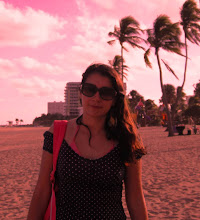Cities nowadays are increasingly using culture as an
economic base. In the U.S. and Western Europe there is a tendency to return to
the city center with focus on the processes of consumption and leisure
accompanied by the appearance of new residents and users of the space. The use
of culture and the development of cultural industries has created spaces that
are either a result of organic growth (for example the movement of artists or
small usually art related companies in abandoned industrial areas - Markusen(2006)
argues that artists are not responsible for gentrification phenomena as usually
are also victims of the displacement) or have been reformed based on urban
regeneration programs and large culture based development projects (for example the Guggenheim museum at Bilbao,Spain or the Sony Center in Potsdamer Platz in
Berlin). Governments use the place branding of cities to emphasize their
special knowledge-based products and services. This regional economic geography
provided the perfect storm for the collision of the local with the global. Competition
between cities became intense and cities try to attract economic investments,
tourists and talented labor pools. These
labor pools are mainly connected with Florida's theory of the creative class or
the generation of "Yuppies" consisting of young professionals working
in the corporate sector (white collars), high education with sophisticated
consumption patterns.
So the planners try to provide amenities necessary for happy
and productive creative workers. However, these kind of strategies contribute
to 'social displacement' of the lower socio-economic classes by higher socio-economic
classes that are characterized by relative wealth and distinguished tastes, and
are attracted by the diverse cultural scene, and the historic urban form. These
groups move to the center of the cities promoting the creation of clusters of
culture and recreation, accompanied with "alternative" high-standard residential
areas (like lofts that are often converted for residential use from industrial
use). They are typical drivers of later stage gentrification and as they occupy
the space, they use the cultural power of fear, to implement high surveillance and high security
measures that leads to the privatization of the space.
The "gentrified" Greenwich Village" in NY, is the most heavily surveilled neighborhood in Manhattan. The residential area had more cameras (371) than any other area (even the business districts). There are, many more cameras in West Village than there are in Midtown Manhattan (284), Times Square (258), or the United Nations (179).
http://www.notbored.org/greenwich-village.html
Markusen, Ann. (2006). Urban Development and Politics of a
Creative Class: Evidence from the Study of Artists. Environment and Planning A,
38 (10), pp.1921- 1940.


0 comments:
Post a Comment